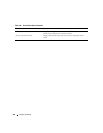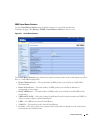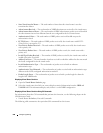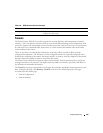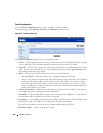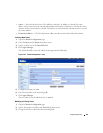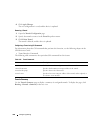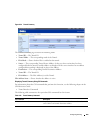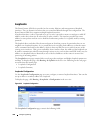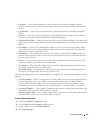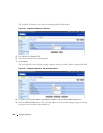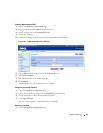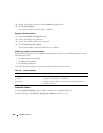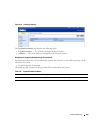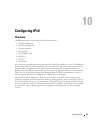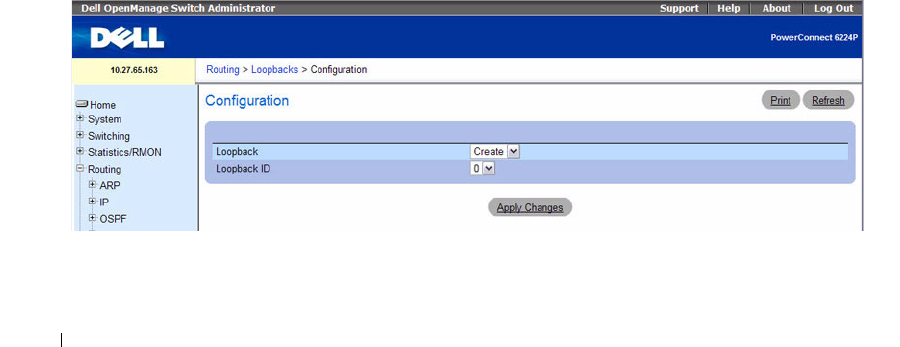
604 Configuring Routing
Loopbacks
The PowerConnect 6200 Series provides for the creation, deletion, and management of loopback
interfaces. They are dynamic interfaces that are created and deleted through user-configuration. The
PowerConnect 6200 Series supports multiple loopback interfaces.
A loopback interface is always expected to be up. As such, it provides a means to configure a stable IP
address on the device that may be referred to by other switches. This interface provides the source
address for sent packets and can receive both local and remote packets. It is typically used by routing
protocols.
The loopback does not behave like the network port on Switching systems. In particular, there are no
neighbors on a loopback interface. It is a pseudo-device for assigning local addresses so that the router
can be communicated with by this address, which is always up and can receive traffic from any of the
existing active interfaces. Thus, given reachability from a remote client, the address of the loopback can
be used to communicate with the router through various services such as telnet and SSH. In this way, the
address on a loopback behaves identically to any of the local addresses of the router in terms of the
processing of incoming packets.
The Loopbacks menu page contains links to web pages that configure and display loopback parameters
and data. To display this page, click Routing
→
Loopbacks in the tree view. Following are the web pages
accessible from this menu page:
• Loopbacks Configuration
• Loopbacks Summary
Loopbacks Configuration
Use the Loopbacks Configuration
page to create, configure, or remove loopback interfaces. You can also
set up or delete a secondary address for a loopback.
To display the page, click Routing
→
Loopbacks
→
Configuration in the tree view.
Figure 9-55. Loopback Configuration
The Loopbacks Configuration pages contain the following fields:



